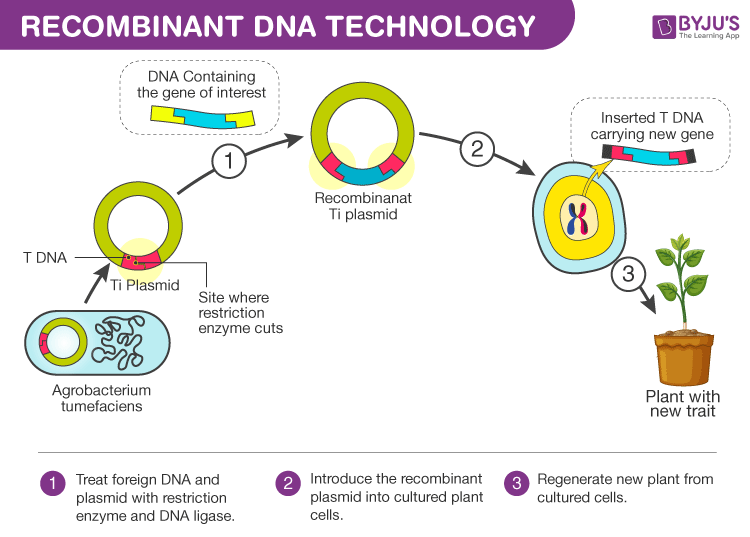Recombinant DNA Technology
Recombinant DNA technology alters the phenotype of an organism (host) through a genetically altered vector. This cloning vector is introduced and integrated into the genome of the organism. So, basically, the process involves the introduction of a foreign piece of DNA into the genome which contains our gene of interest. The gene which is introduced is the recombinant gene and the technique is called the recombinant DNA technology. Here we will learn about key tools of recombinant DNA technology.
Tools of Recombinant DNA technology
Inserting the desired gene into the genome of the host is not as easy as it sounds. It involves the selection of the desired gene for administration into the host followed by a selection of the perfect vector with which the gene has to be integrated and recombinant DNA formed. This recombinant DNA then has to be introduced into the host. And at last, it has to be maintained in the host and carried forward to the offspring. Recombinant DNA technology can be complete and achieved with the help of some elemental tools. The different tools used for the purpose are discussed below:

Restriction Enzymes
The restriction enzymes – help to cut, the polymerases- help to synthesize and the ligases- help to bind.
The restriction enzymes used in recombinant DNA technology play a major role in determining the location at which the desired gene is inserted into the vector genome. They are two types, namely endonucleases and exonucleases. The endonucleases cut within the DNA strand whereas the exonucleases cut the nucleotides from the ends of the DNA strands. The restriction endonucleases are sequence-specific which is usually palindrome sequences and cut the DNA at specific points. They scrutinize the length of DNA and make the cut at the specific site called the restriction site. This gives rise to sticky ends in the sequence. The desired genes and the vectors are cut by the same restriction enzymes to obtain the complementary sticky notes, thus making the work of the ligases easy to bind the desired gene to the vector.
Vectors
The vectors help in carrying and integrating the desired gene. These form a very important part of the tools of recombinant DNA technology as they are the ultimate vehicles that carry forward the desired gene into the host organism. Plasmids and bacteriophages are the most common vectors in recombinant DNA technology.
Host Organism
Host organism is the organism into which the recombinant DNA is introduced. The host is the ultimate tool of recombinant DNA technology which takes in the vector engineered with the desired DNA with the help of the enzymes. There are a number of ways in which this recombinant DNA’s are inserted into the host, namely – microinjection, biolistics or gene gun, alternate cooling and heating, use of calcium ions, etc.
For more details on Recombinant DNA technology with video lessons, visit BYJU’S.

Being myself lecturer in Botany appreciate your team workers for providing answers to difficult questions and making notes public.
I salute your whole team.